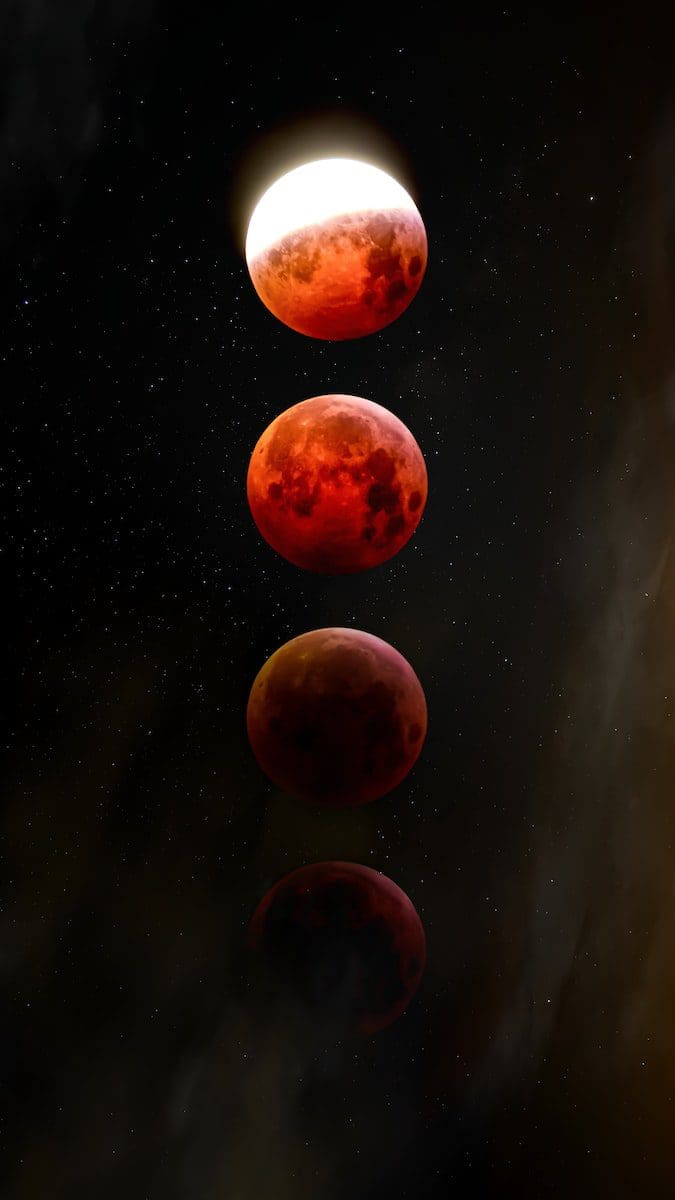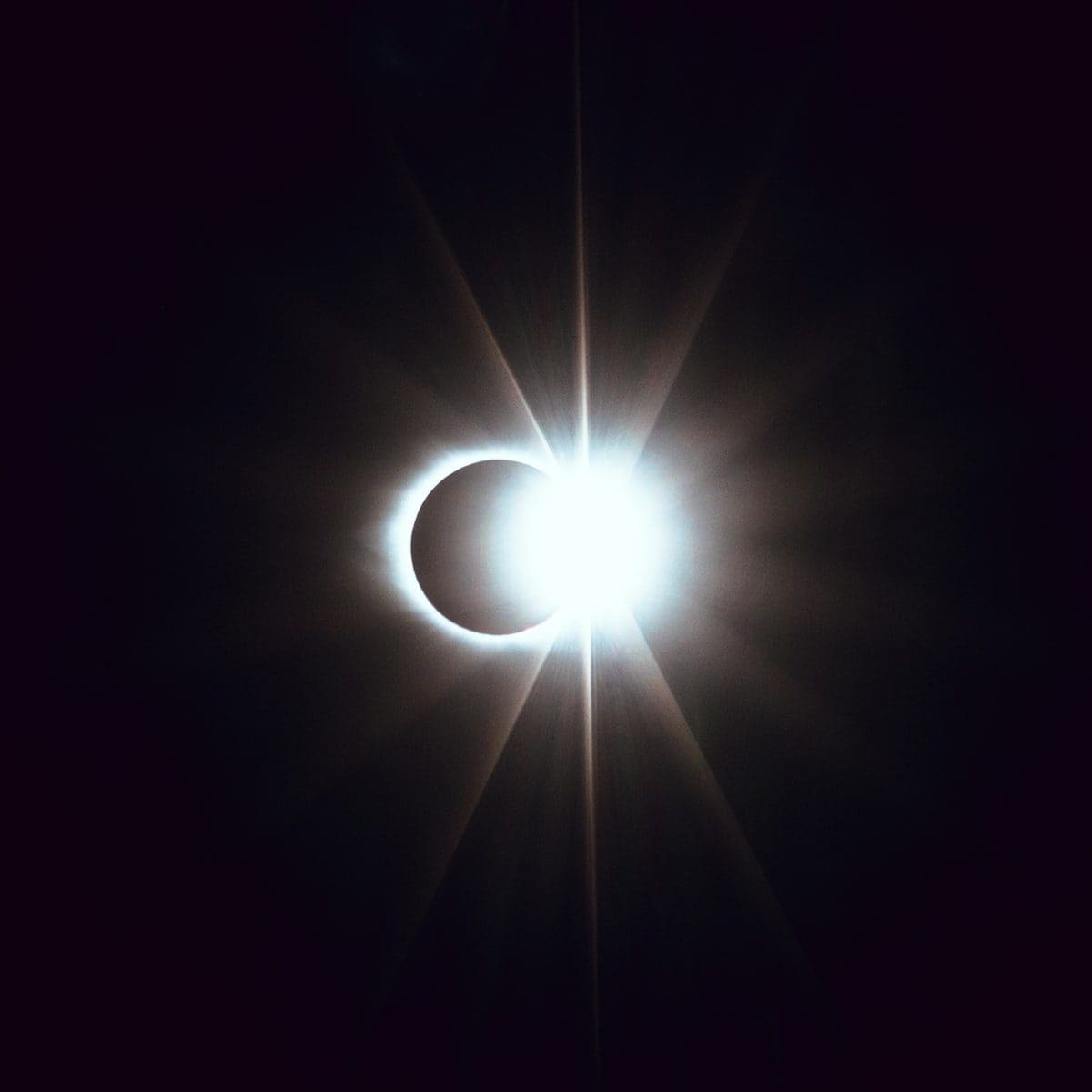The lunar eclipse and the new moon are two crucial concepts in astronomy. There may be confusion between the two terms as both these terms deal with the position of the Sun, Earth and Moon.
Although there may be some similarities between these two concepts, there is a spring difference between these two terms.
Key Takeaways
- A lunar eclipse occurs when the Earth passes between the Sun and the Moon, casting its shadow on the Moon, which can cause the Moon to appear red.
- A new moon occurs when the Moon is positioned between the Earth and the Sun, making it difficult or impossible to see from Earth because the illuminated side is facing away from us.
- Lunar eclipses are relatively rare events, while new moons occur approximately once a month.
Lunar Eclipse vs New Moon
Lunar eclipse is an astronomical event that happens when the moon becomes darker because it moves into the Earth’s shadow. It happens every six months. New moon is the moon when it appears at the beginning of its four-week cycle, has a thin curved shape, or is in concurrence with the sun.

However, the above is not the only difference. A comparison between both the terms on specific parameters can shed light on subtle aspects:
Comparison Table
| Parameters of Comparison | Lunar Eclipse | New Moon |
|---|---|---|
| Meaning | A lunar eclipse is when the Earth is between the Sun and the Moon. This leads to the shadow of Earth falling across the Moon. | The new moon is a phenomenon to describe a phase of the Moon in its orbital cycle around the Earth. In the new moon phase, the Moon is situated between Earth and Sun; hence, no portion of the moon can be observed. |
| Positioning | The lunar eclipse deals with the positioning of Earth | The new moon deals with the positioning of the Moon |
| Side objects | Earth is between Sun and Moon | Moon is between Sun and Earth |
| Visibility during nighttime | A lunar eclipse can be seen on an entire night | The moon cannot be viewed during the whole night during a new moon |
| Appearance | A lunar eclipse becomes visible on a full moon night | A solar eclipse happens during the new moon |
| Period of occurrence | For an hour or so | Throughout the night |
| Reason for occurrence | A Lunar eclipse happens because Earth gets in the way of the light from the Sun and stops the light from hitting the Moon. | A new moon happens because of the Moon’s changing phase as it travels in its monthly orbit. |
| Frequency | Lunar eclipse happens periodically or twice a year | A new moon occurs once a month |
| Effect | During the lunar eclipse, the sunlight is blocked from reaching the moon | No specific effect |
| Types | There are multiple types of lunar eclipses, such as partial lunar eclipse, total lunar eclipse, and penumbra lunar eclipse. | There are no such types of the new moon. |
What is Lunar Eclipse?
A lunar eclipse is one in which the moon appears darkened as it passes into the earth’s shadow.
It is an eclipse in which the full moon passes partially or wholly through the umbra of the earth’s shadow. In simple words, a phase in which the Earth crosses between the moon and the sun, casting a shadow of Earth onto the moon, is called a lunar eclipse.
A lunar eclipse is also known as “Chandra Grahan” in India. A lunar eclipse only occurs a) during a full moon and b) when the moon goes through Earth’s shadow. Earth has two categories of shadows, viz.
Umbra (conical part of the shadow excluding all light from the primary source) and the penumbra (space of partial illumination between perfect shadow and full light).
The lunar eclipse has three forms. They are a) partial lunar eclipse- an eclipse in which the moon is not entirely immersed in the umbra of the earth’s shadow b) total lunar eclipse- an eclipse which happens when the Earth is between the Sun and the Moon and the Moon is shadowed, and c) penumbral lunar eclipse- an eclipse in which the Moon, Earth, and Sun are not perfectly aligned, i.e. when the Moon passes through the faint and outer part of Earth.

What is New Moon?
The new moon is the phase of the moon when it is in concurrence with the sun so that its dark side is towards the earth. The new moon can also be referred to as a scenario where the thin crescent moon is seen shortly after sunset for a few days after the actual occurrence of the new moon stage.
The new moon is one of its phases as it moves in the orbit between the sun and the earth.
The new moon occurs every month when the moon and the sun join together. The new moon is invisible in the first stage to people later; it slowly emerges as a skinny, curved figure less than its full size.
The new moon signifies the preliminary satellite stage of the moon’s orbit in the universe. Therefore, the new moon is considered a symbol of new beginnings.
People consider this day as auspicious to commence a new work or assignment. The new moon is regarded as a monthly gift to humankind from space.

Main Differences Between Lunar Eclipse and New Moon
- The lunar eclipse deals with the positioning of Earth. The new moon deals with the positioning of the Moon.
- Lunar eclipses occur when the Earth comes in the middle of the Sun and the Moon. The new moon occurs when the Moon is between Sun and the Earth.
- A lunar eclipse can last for approximately an hour. On a new moon, the moon is not visible during the entire night, which means the process occurs for the entire night.
- A Lunar eclipse commonly happens twice a year. A new moon occurs every month.
- A lunar eclipse is not a phase of the earth; it is a situation where the shadow of the world covers the moon for a brief period. The new moon can be considered one of its phases as it travels in orbit.
- There are multiple types of lunar eclipses. There are not any specific categories of the new moon.


Too much technical jargon. It could be simplified a bit for general readers.
The details might be overwhelming for some readers.
I agree, it’s quite complex for those not well-versed in astronomy.
The descriptions are precise and objectively put together. Kudos to the writer.
Yes, it’s evident that the author has expertise in this area.
The scientific clarity is commendable.
Interesting article, the facts related to lunar eclipse and new moon are very well explained.
Absolutely! The information is well researched and clearly presented.
I had some misconceptions about lunar eclipse and new moon. The article has offered a clear understanding.
A detailed breakdown of what a lunar eclipse and new moon are. I enjoyed reading this thoroughly.
Absolutely, not just informative but also well-written.
It’s a well-composed piece, indeed.
The article does justice to explaining the scientific distinctions between the lunar eclipse and new moon.
Indeed, a comprehensive analysis of these astronomical phenomena.
An engaging read. The article presents a captivating comparison between lunar eclipse and new moon.
Absolutely, I particularly appreciated the comparison table.
The concept is well-articulated throughout. A job well done.
Too much emphasis on detailed technicalities, some simplification would help.
The comparison table is a great addition, helps in understanding the key differences effectively.
Absolutely, it simplifies the contrast between lunar eclipse and new moon.
Right, the table provides a quick reference for those interested in a direct comparison.
The article neglects to mention the cultural and historical significance of these terms.
That’s true. It would be insightful to include a brief history of lunar eclipse and new moon in different cultures.
Thoroughly researched and educational content. Well done!
Agreed, it’s evident that a lot of effort went into this article.